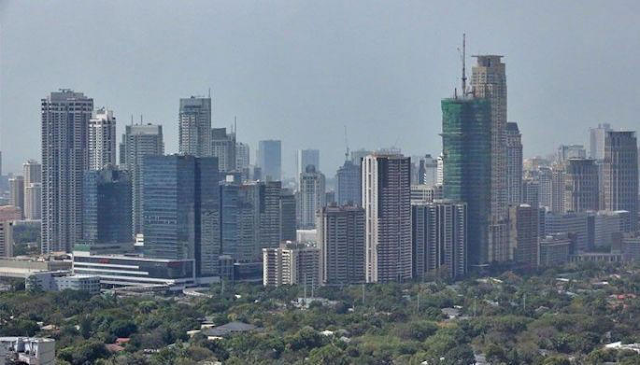Opinion
A Rising Philippines Faces a Crucial Year Ahead
The island nation is arguably Southeast Asia’s most strategically important country. Can it become its most influential?
BY: Haroro Ingram; Andrew Mines
United States Institute of Peace
24 April 2024
By virtue of its geography alone, the Philippines is arguably Southeast Asia’s most strategically important country. Yet its actual influence has tended to lag its potential due to decades of socioeconomic struggle and internal instability, especially in its restive southern island of Mindanao. In recent years, however, the Philippines has rapidly emerged as one of the most consequential countries in the Indo-Pacific, driven in large part by President Ferdinand Marcos’ transformative policies on national security, defense and foreign relations.

A recent trilateral meeting with the United States and Japan in Washington, D.C. is testimony to the nation’s growing status on the world stage. Yet, its continued trajectory is far from guaranteed. Over the next 13 months, the Philippines must grapple with an internal peace process that will define its ability to reorient its posture toward addressing China’s aggression. Manila will also need to harness economic and demographic factors that will be crucial for not just the Philippines’ growth but ensuring it has the capability and capacity necessary for its military modernization goals. How it manages these simultaneous efforts will fundamentally shape the country’s trajectory and character for the next decade.
Inside the Cauldron
Many of the Indo-Pacific’s most contested geopolitical fault-lines converge in the Philippines’ immediate neighborhood. This archipelagic nation sits at the center of a series of island chains stretching from Australia into the heart of Asia. Taiwan is less than 90 miles from the Philippines’ northernmost island while its southernmost islands are part of a tri-border area with Indonesia and Malaysia. To its east lies the Pacific Ocean and, eventually, the United States. To its west is mainland Asia and, wedged in between, are the world’s most contested waters: the South China Sea, or West Philippine Sea. It is here that China has engaged in a long campaign of incursions into waters that have been determined to be part of the Philippines Exclusive Economic Zone under international law.
Since last month, China has significantly escalated this campaign of maritime aggression in Philippine waters. Dangerous maneuvering and water cannon assaults, partnered as always with Beijing’s trademark “gaslighting” rhetoric, has pushed tensions to a precarious new high. China’s recent attacks on the Philippines in March injured seven Filipino servicemembers. Both the United States and the Philippines have acknowledged that if a Philippines servicemember is killed it would be sufficient to initiate Article 5 of the Mutual Defense Treaty, which could lead to direct kinetic conflict between China and the United States in the West Philippine Sea.
To prevent further escalation in its waters, Marcos signed Executive Order 57 restructuring the nation’s maritime domain security and awareness as the first in a series of steps to raise countermeasures. With external threats to its national sovereignty mounting in an Indo-Pacific region characterized by rising volatility, it is little wonder that the Philippines intends to embark on an ambitious re-posturing and modernization of its armed forces.
Toppling the Dominoes
For most of its history, the Armed Forces of the Philippines have been almost solely focused on internal threats, specifically communist guerrillas and Moro rebellions in the south. While the communist threat has been significantly weakened, the extraordinary successes of the peace efforts between the Moro Islamic Liberation Front (MILF) and the Philippines government, leading to the establishment of the Bangsamoro Autonomous Region in Muslim Mindanao, has brought the most promising hope for peace and stability in the southern Philippines for generations. With the region’s first elections scheduled for May 2025, which will bring an end to an appointed transitional authority, there are now 13 months left for the remaining milestones of the peace agreement to be met and the threats posed by various peace spoilers to be quelled.
A crucial year lies ahead. Without a sufficiently stable Bangsamoro region, the Philippines will simply not be able to fully commit the time, resources and focus necessary to transform its military for territorial defense. Worse than that, such a future contingency would mean that the Philippines would face simultaneous threats to both its internal stability and external sovereignty. Peace in Bangsamoro is not just important for enabling a desperately needed refocusing of its military. A more stable and coherent Philippines would allow the nation to take full advantage of the demographic and economic opportunities before it.
Today, those opportunities are ample. Twenty-eight percent of the Philippines population is between the ages of 10-24, giving the country a labor market edge. After rebounding from global pandemic shock in 2020, the Philippines GDP grew 7.6% in 2022, placing it among the world’s five fastest-growing large emerging markets that year. Domestic consumption, as well as remittances from overseas, has traditionally driven growth but recent years have seen reforms and internal stability that are positioning the Philippines for more investment-led growth. Marcos views economic and national security as hand-in-hand and has shepherded in a new era of economic and security partnerships with the world’s largest democratic powers.
If internal and regional security challenges are effectively managed, the Philippines shows the potential to leverage continued economic growth and expanded global partnerships to wield a regional influence that matches its geo-strategic position in the next decade or so.
The X Factor in the Trilateral
Nowhere is the Philippines’ rise clearer than in the recent U.S.-Japan-Philippines trilateral summit. Among the growing latticework of minilateral alliances between the Indo-Pacific's democracies, this triad draws unique strength from historically robust bilateral relationships on all three sides. A flurry of state visits, ministerial meetings and joint exercises throughout 2023 and early 2024 only built anticipation leading up to the summit. By the summit’s end, any doubts about the trilateral’s seriousness — and the importance of the Philippines to it — were comprehensively dismantled.
On maritime security, the three nations agreed to expand on the first-ever joint exercise between their coast guards in 2023 with additional capacity building, maritime domain awareness support and joint patrols, including with other regional partners like Australia over the weekend prior to the trilateral summit.
Since then, the annual Balikatan ("shoulder-to-shoulder") military exercises — the largest annual bilateral exercise between the Philippines and the U.S. — commenced on Monday. This year’s exercise features observers from 14 other nations, involvement of the French Navy and new military equipment recently delivered to the Philippines by international partners. More support could be on the way, with President Biden requesting an additional $128 million in congressional funding for implementation of infrastructure at Philippines bases that the U.S. accesses under the Enhanced Defense Cooperation Agreement.
Beyond maritime security, the U.S.-Philippines-Japan trilateral formally announced a joint cyber defense network, which follows recent cyberattacks by the Chinese military-linked "Volt Typhoon” group targeting critical infrastructure. Japan and the U.S. also agreed to expand investments in the Philippine semiconductor workforce and help secure the three nations’ semiconductor supply chains. Additional investments and commitments between the three countries covered the global online creative industry, renewable energy, critical minerals, an international submarine cable system connecting the U.S. and the Philippines, and several other areas. Another highlight was the announcement of the Luzon Economic Corridor, a multi-city infrastructure and investment project to connect and drive economic growth in four major Philippine economic hubs including Subic Bay, Clark, Manila and Batangas.
The summit marks a major milestone in the trilateral relationship. Beyond formally announcing a suite of trilateral economic and security cooperation, it showcased a shared vision of a peaceful, stable and prosperous Indo-Pacific. It also showcased exactly how the three countries could amplify one another’s strengths.
The U.S. brings immense military power, economic support and technical expertise to bear. Japan for decades has led the world in infrastructure investment in Southeast Asia, provided a quiet buffer against its authoritarian neighbors, steadfastly supported peace and security in Mindanao and is currently undergoing its own revolution in defense posture. The Philippines has a unique combination of geopolitical positioning, massive economic growth potential and a wealth of expertise and experience forged through years of face-offs with China. In the short-term, it could be the latter that proves to be one of the Philippines’ most valuable contributions to its allies and partners.
The Crossroads
What happens over the next 13 months will fuel a compounding dynamic that will either help to advance the Philippines’ national progress and international influence or hamstring it. The dominos will fall one way or the other beginning with whether a peaceful transition in the Bangsamoro can be fully realized. Any nation that cares about Beijing’s destabilizing impact in the Indo-Pacific must also care about the fortunes of the Bangsamoro peace process. Of course, peace in the south is only the first of several critical issues that Manila must grapple with. The stakes are high, but both the odds and momentum favor the Philippines.


























